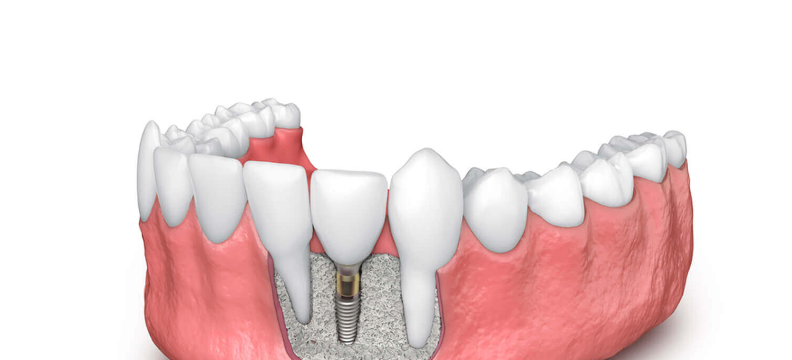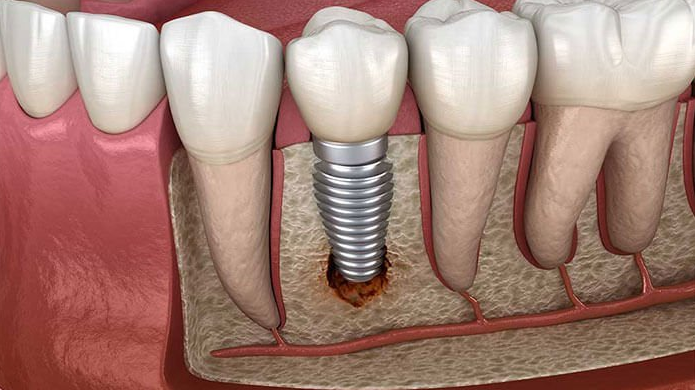
Dental implants have become a highly favored solution for replacing missing teeth due to their durability, natural appearance, and ability to restore full function to the mouth. However, for a dental implant to be successful, it requires a solid foundation of healthy bone in the jaw. In some cases, bone grafting may be necessary to provide this foundation. At Rockville Dental Arts, we aim to demystify the process of bone grafting and help you understand when and why it may be needed for your dental implant rockville MD procedure.
Understanding Dental Implants
Dental implants are artificial tooth roots made of titanium that are surgically placed into the jawbone. They serve as a stable base for attaching artificial teeth, such as crowns or bridges. Unlike dentures, which can slip or cause discomfort, dental implants offer a permanent solution that looks and feels like natural teeth.
For an implant to be successful, it must integrate with the jawbone in a process called osseointegration. This ensures the implant is stable and can support the forces of chewing and speaking. However, if the jawbone is too thin or lacks sufficient density, the implant may not be secure, and bone grafting may be required to build up the bone and create a stable foundation.
What Is Bone Grafting?
Bone grafting is a procedure that involves adding bone or bone-like materials to the jawbone to encourage new bone growth. The new bone can be harvested from another part of your body, a donor, or it can be a synthetic material designed to stimulate bone regeneration. The goal of bone grafting is to create enough healthy bone to support a dental implant.
At Rockville Dental Arts, we use advanced techniques to ensure that bone grafting is as effective and minimally invasive as possible. Our team will work with you to determine the best type of graft for your needs and ensure that the procedure is carried out with the highest level of care and precision.
When Is Bone Grafting Necessary?
Bone grafting may be necessary for dental implants in several situations:
Bone Loss Due to Missing Teeth: When a tooth is missing for an extended period, the jawbone can begin to deteriorate or resorb. This happens because the bone is no longer stimulated by the pressure of chewing, which typically maintains bone density. If too much bone is lost, there may not be enough to support an implant, making bone grafting necessary.
Periodontal Disease: Severe gum disease can lead to bone loss around the teeth. This can compromise the jawbone’s ability to support dental implants. Bone grafting can help rebuild the lost bone and provide a stable base for implants.
Trauma or Injury: Accidents or injuries that damage the jawbone may necessitate bone grafting before dental implants can be placed. This ensures that the implants have a secure and robust foundation.
Natural Bone Deficiency: Some people may naturally have insufficient bone in their jaw to support an implant. This could be due to genetics, developmental issues, or other factors. Bone grafting can increase bone volume and allow for successful implant placement.
Types of Bone Grafts
Autografts: This involves using bone from your own body, typically from the chin, hip, or another site. Autografts are considered the gold standard because they contain living bone cells that can promote new bone growth.
Allografts: These grafts use bone from a human donor, usually obtained from a bone bank. The bone is thoroughly processed to ensure safety and sterility, and it can be an excellent option for those who prefer not to use their own bone.
Xenografts: Xenografts use bone from a non-human source, such as bovine (cow) bone. These grafts are processed to be biocompatible and are an effective option for promoting bone growth.
Synthetic Grafts: These grafts are made from synthetic materials that mimic the structure of natural bone. They are designed to support bone regeneration and can be a good choice for patients who prefer not to use biological materials.
The Bone Grafting Procedure
The bone grafting procedure typically involves the following steps:
Consultation and Assessment: During your initial consultation at Rockville Dental Arts, we will assess your oral health and determine if bone grafting is necessary. This may involve taking X-rays or 3D scans to evaluate your bone density and structure.
Preparation: On the day of the procedure, you will receive local anesthesia to numb the area and ensure your comfort. In some cases, sedation may be offered to help you relax.
Graft Placement: The bone graft material is carefully placed into the area where the bone is needed. This is done through a small incision in the gum tissue. The graft is then secured in place, and the gum is sutured closed.
Healing: The healing process can take several months as the graft integrates with your natural bone and promotes new bone growth. During this time, we will monitor your progress and provide guidance on how to care for the grafted area.
Implant Placement: Once the graft has fully integrated and there is sufficient bone to support an implant, the dental implant procedure can proceed. The implant is placed into the newly regenerated bone, where it will fuse over the next few months.
Benefits of Bone Grafting for Dental Implants
Bone grafting offers several benefits for patients considering dental implants:
Enhanced Stability: By increasing bone density and volume, bone grafting provides a stable foundation for dental implants, improving their long-term success.
Natural Appearance: A well-placed implant supported by healthy bone will look and feel like a natural tooth, enhancing your smile and confidence.
Prevention of Further Bone Loss: Bone grafting can help prevent further bone deterioration, preserving the structure and shape of your jawline.
Improved Oral Function: With a stable implant, you can enjoy improved chewing and speaking abilities, contributing to better overall oral health.
Conclusion
At Rockville Dental Arts, we are committed to helping you achieve a healthy and beautiful smile. If you are considering dental implants and are concerned about bone loss, bone grafting may be the solution you need. Our experienced team will guide you through every step of the process, ensuring you receive the highest level of care and the best possible outcome.
Contact us today to schedule a consultation and learn more about how bone grafting and dental implants can restore your smile and enhance your quality of life.

